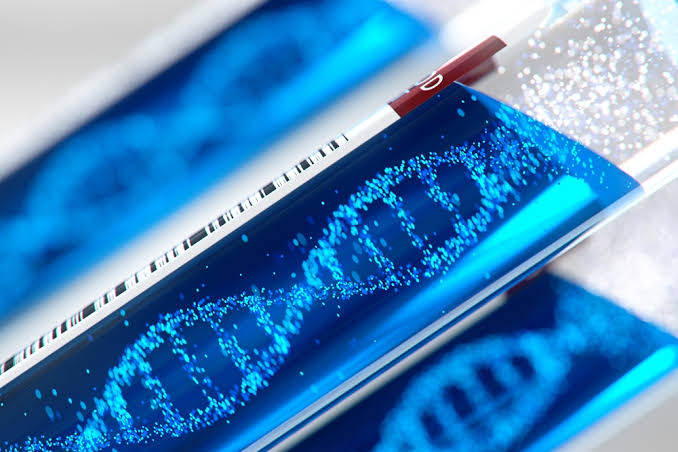Y-STR DNA testing offers those curious about their paternal history an effective means of gathering more information. As it only tests for variations within Y chromosome inheritance patterns (which only vary very minimally across generations), autosomal DNA tests cannot compare. With its exclusive focus on male lineages, Y-STR testing is particularly advantageous in tracking down male ancestors or verifying male-to-male familial links; its usefulness makes forensic and genealogical investigations much simpler than before.
What Is Y-STR DNA Testing?
Y-STR stands for “Y-chromosome Short Tandem Repeat.” These repeating sequences on the Y chromosome serve as indicators of shared paternal ancestry as it passes from father to son relatively unchanged. A male line DNA test kit determines each man’s genetic profile and compares it against similar profiles from others to see if there may be shared paternal roots.
This test is simple and non-invasive as it only involves taking a simple cheek swab. Labs then analyze various Y-STR markers (usually 17, 37 or more) in order to create an in-depth genetic signature which is then compared with others either in databases or among particular people in order to verify relatedness.
Tracing Paternal Ancestry
A primary application of Paternity USA Y-STR DNA test is discovering paternal ancestry. The male line can provide important clues as to ethnic and geographic origins of his lineage, including which generations it spans and whether there may be common male ancestors shared between individuals with identical or strikingly similar Y-STR profiles; hence this test’s potential use in surname studies in which men who share last names attempt to uncover whether or not they all share one common ancestor.
Y-STR testing can be especially valuable in cases in which historical records are unclear or unavailable, leaving gaps in family trees without enough detail to fill. Genetic information can then provide the data needed to fill these holes – helping find distant relatives, verify putative connections across family lines, or verify historical connections.
Use In Paternity And Kinship Cases
When the presumed father cannot be tested directly for paternity reasons, Y-STR testing provides the ideal alternative. Autosomal DNA tests may also be utilized; in these instances, a close male relative such as their father or brother might provide samples which will establish whether their DNA matches that of the accused father and establish whether his genetic ancestry shares with that of their alleged sib.
Males looking to verify if they possess biological paternal ancestry can also use this testing technique for building relationships and discovering who their direct male-line relatives may be, whether for legal, immigration, or personal purposes. Y-STR testing offers an accurate way to do just this and is one reliable means of verifying or ruling out direct male line connections – whether needed for immigration purposes, personal relationships, or legal situations.
Applications In Forensics And Law Enforcement
When conducting forensic investigations, male line paternity test is indispensable to effectively conducting investigations. With male suspect DNA surfacing at crime scenes, this analysis helps pinpoint or exclude possible male suspects. Furthermore, female DNA is unmixed from male DNA so even limited or damaged samples may provide helpful genetic insight.
Law enforcement officials use Y-STR profiles to build genetic databases that they use for identification of remains or cold cases, and solving cold ones. Although Y-STR testing cannot distinguish among male relatives within one paternal line, it can still provide useful leads and can narrow down leads when investigating criminal cases.
Understanding The Scope Of Y-STR Testing
Since DNA testing between related males focuses solely on paternal ancestry, its results provide clear data. This focused method makes Y-STR DNA tests extremely powerful at pinpointing father-son relationships across generations; though not providing information regarding maternal relatives. Even though other DNA tests provide such details as well.
Accuracy in verifying shared ancestry can be seen through its accuracy in matching up males from one paternal line – including fathers, sons, and siblings – with consistent Y-STR profiles; when written documents cannot verify familial lines. This helps support their validity.
Modern tests now assess an increased number of Y-STR loci, though people from similar ethnic backgrounds may sometimes share comparable markers when employing fewer. When combined with extensive databases or other DNA tests, however, Y-STR analysis becomes even more accurate and informative for both forensic and genealogical investigations.
Conclusion
One effective and innovative technique for investigating male ancestry and genetic inheritance via paternal lines is best Y-STR DNA test, providing a scientific basis for exploring past events – be they related to forensic study, paternity verification, genealogy research, or reconnecting distant relatives. While its limitations lie in differentiating close male cousins (for instance, when trying to differentiate them through close cousin DNA comparisons), its value lies in directly identifying paternal lineage; for those curious enough about investigating this side of their family tree, it provides reliable information that connects biological history identification in one comprehensive package!

